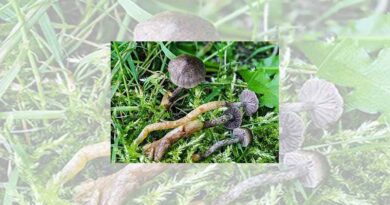Scotland’s natural habitats at risk due to intolerable nitrogen levels
“While nitrogen is essential for life it is also a pervasive pollutant which, in excess, is responsible for the degradation of some of our most iconic Scottish habitats. Our research has shown that nitrogen deposition is one of the key drivers of change in semi natural habitats across Scotland and demonstrated how it triggers detrimental changes in plant communities, soil properties and water quality”
16 December 2020, Scotland: Many of Scotland’s iconic landscapes and natural habitats have intolerable nitrogen levels according to a report released by Plantlife Scotland today. Endorsed by the James Hutton Institute and produced using some of its data, the report reveals the countries plant, lichen and fungi diversity is at serious risk of continued decline with a number of Scotland’s important plant areas exceeding their critical load – the point at which nitrogen harms habitats.
Also Read: MagGrow raises €6m on its technology for precision crop protection
Dr Andrea Britton, Plant Ecologist in the Institutes Ecological Sciences group said: “While nitrogen is essential for life it is also a pervasive pollutant which, in excess, is responsible for the degradation of some of our most iconic Scottish habitats. Our research has shown that nitrogen deposition is one of the key drivers of change in semi natural habitats across Scotland and demonstrated how it triggers detrimental changes in plant communities, soil properties and water quality.”
Commissioned by the Scottish Government the report on air pollution finds the countries mountains, grasslands and woodlands have become un-naturally nutrient-rich and acidic. This leads to loss of species, lower resilience to climate change, and vulnerability to pests and disease.
Andrea Britton added: “Because nitrogen deposition levels in Scotland are lower than in other parts of the UK, we have an important opportunity to protect ecosystems before they are irrevocably damaged. I welcome Plantlife’s report which raises the profile of this important issue and sets out key actions which we can take now to reduce release of excess nitrogen to the environment.”
With 80% of the countries land within special areas of conservation such as the Cairngorms having intolerable nitrogen levels urgent action is required. Jenny Hawley, Plantlife Policy Manager said: “Robust Government regulations are desperately needed but equally vital is the advice and support to landowners and farmers who are battling huge Brexit upheaval. A reduction of emissions would benefit public health, by reducing particulate matter in the air, as well as helping to cut emissions of nitrous oxide, a powerful greenhouse gas.
“Ammonia and other nitrogen emissions from farming can be significantly reduced by improving the efficiency of how livestock, their manure and other fertilisers are managed. The Government’s proposed Cleaner Air for Scotland strategy and Nitrogen Balance Sheet offer a golden opportunity to cut ammonia and other nitrogen emissions to benefit Scotland’s wildlife, public health and the climate.”
Alistair Whyte, Head of Plantlife Scotland said: “It is not too late to halt this. There are huge opportunities for conservationists, agriculture and Scottish Government to work together to implement the recommendations in our report. Our environment and our farmers will benefit from a clear strategic vision for the future of agriculture in Scotland, and from properly targeted support measures to help tackle this problem. We welcome the recent publication of the Farming for 1.5° report, and we hope Plantlife Scotland’s report and work on nitrogen which shows that the technology needed for change is here, can help us reach our shared goals of a natural environment rich in wildlife.”
The full report can be found here.
Key findings
Scotland’s globally important lichens and mosses of temperate rainforests, many of which are found nowhere else in the UK, are particularly at risk from nitrogen deposition and are being pushed to their limits – 1/5th of Scotland is exposed to levels which devastate species such as Lobaria pulmonaria, tree lungwort, a beautiful vibrant lichen, which has its remaining stronghold in Scotland because levels of air pollution in the rest of the UK have killed it off. Alarmingly, it will perish quickly under acidifying rainfall which carries pollution far from its sources.
Data suggests that just under half of wood habitats, and a quarter of open habitats within Scotland’s Important Plant Areas have exceeded their critical load – the point at which nitrogen harms habitats.
Merrick Kells IPA, in Galloway, contains a high diversity of upland habitats which having been exposed to high levels of nitrogen deposition are facing a reduction in montane species, and an increase in more generic nitrogen-tolerant species. It is likely that climate change, and less winter snow, is also contributing to these changes.
Nitrogen oxide emissions, mainly from transport and energy generation, have declined but are still a significant source of pollution affecting Scotland’s wildlife.
Scotland’s ammonia emissions, 92% of which come from agriculture, have only declined by 16% in 50 years (since 1970) and are unlikely to improve without rapid, targeted action and collaboration.
While ammonia emissions from farming have a greater impact close to the source, nitrogen oxide emissions can be transported long distances in the atmosphere before being deposited into the environment, affecting wildlife far from any sources of pollution.
Notes to editors
The Scotland nitrogen report is endorsed by the following organisations: British Bryological Society, British Lichen Society, Botanical Society of Britain and Ireland (BSBI), Buglife, Soil Association Scotland, Woodland Trust and WWF.















